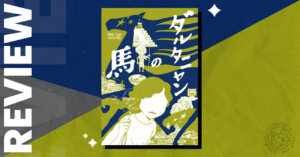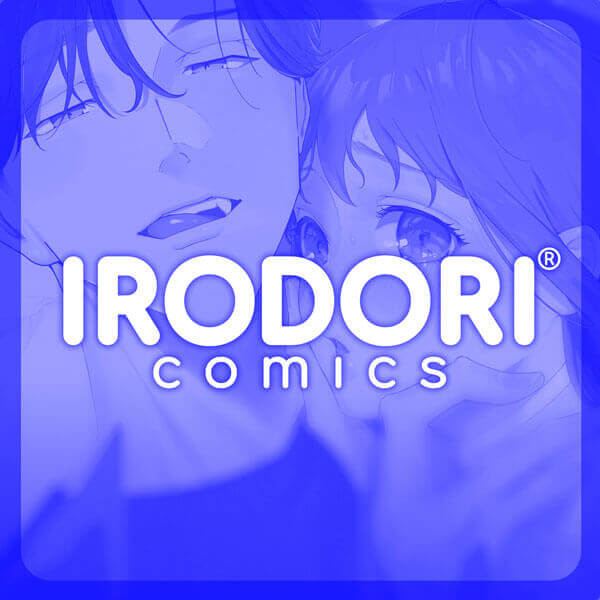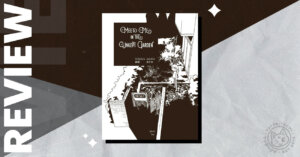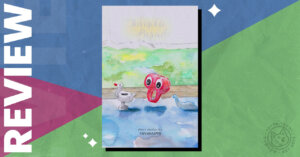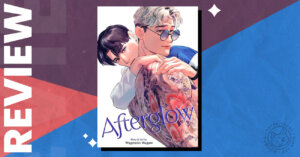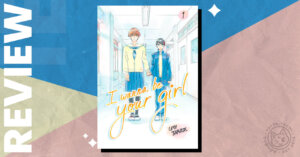Content Warning: Violence, Animal Injury, Mild Horror
Synopsis
D’Artangan’s Horse is Tsugawa’s follow-up to Mermaid Town. Six years on, his dreams are just as vivid as before. This new journey through the subconscious features fantastical food, mysterious maidens, and ghostly goings on.
New Dreams
Tsugawa’s skills as an artist have incredibly improved since Mermaid Town. His work in the original was still fantastic, so seeing that it can get this much better feels like magic, even though I know it must have come from lots of hard work and dedication to his craft. The hand-drawn quality really elevates the material. The backgrounds have so much rich detail and a great understanding of space, they feel like the kind of town sketches you’d pick up from a local artist whilst on holiday. It makes you feel as though you too could visit these places and enjoy the warmth of the hot spring or the taste of the ramen.
The creature design in this title is fantastic. Each of the monsters have a unique look that pays tribute to classic monsters of yore but still feels fresh and frightening. It’s fitting, since D’Artagnan’s Horse has more of a tilt towards monster horror than Mermaid Town, with fewer slice-of-life style stories. It helps make an overall contrast to the previous volume and shows Tsugawa’s development as both an artist, and as a person. Each story felt unique enough to warrant a place in this anthology whilst still feeling part of the whole.
As a Brit, I was particularly amused by the Loch Ness Monster-themed curry restaurant in “Nesko’s Curry.” The restaurant is for “European-style” curry, so I appreciated the subconscious tribute to Glaswegian Mr Ali Ahmed Aslam, the inventor of Chicken Tikka Masala. Whilst some may find the turban too stereotypical, it feels very much like something you would see on iconic 90s British-Asian comedy series Goodness Gracious Me, so I think it gets a pass.
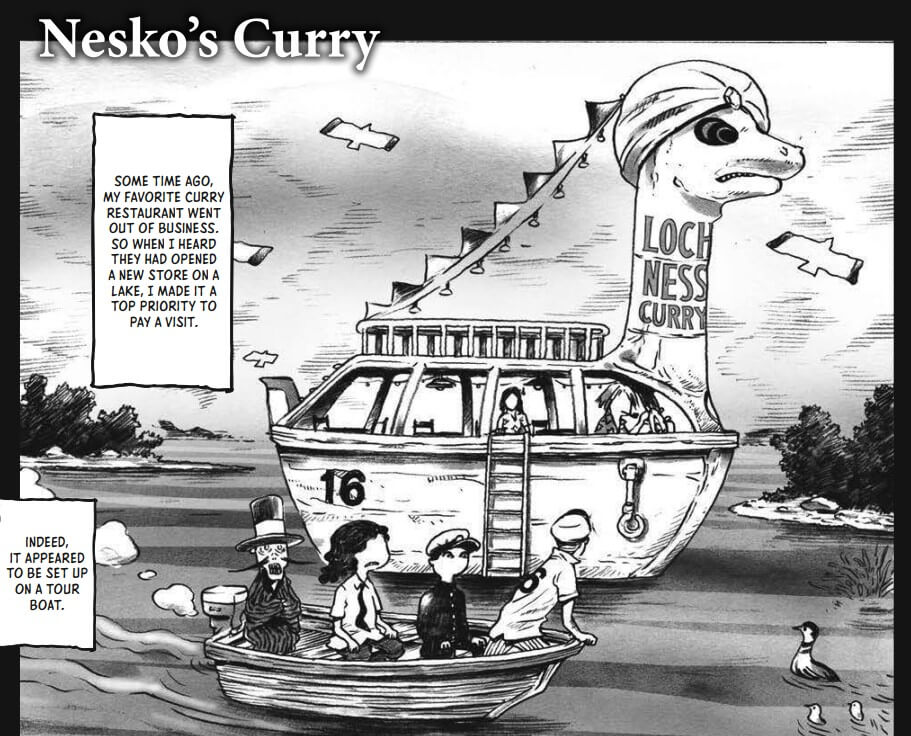
Old Nightmares
My previous statement that there’s nothing more boring than listening to other people’s dreams remains true. Whilst this curation of dreams is, on the surface level, more interesting, the narration style takes all that away. The rich worlds that are presented have too much distance due to the stilted dialogue. Whilst this stylistic choice matches the concept of telling someone else about your dreams, it does not make for compelling reading. I think it would be a more enticing narrative if it was played more straight, with the characters speaking for themselves and not just in the omnipotent voice of the author.
I will also admit to being personally disappointed that the actual D’Artangan from legendary Black author Alexandre Dumas’ The Three Musketeers did not make an appearance. The character has played a key role throughout my teenage years, from The Man in the Iron Mask to La Femme Musketeer to The Musketeers. Whilst his horse does make an appearance, it’s also the same horse he sells off at the start of the series because people keep making fun of it for being too yellow. This point is never brought up in Tomohiro’s dream of the same name, which begs the question: Why was it chosen as the title for the entire work?
The Dawn Chorus
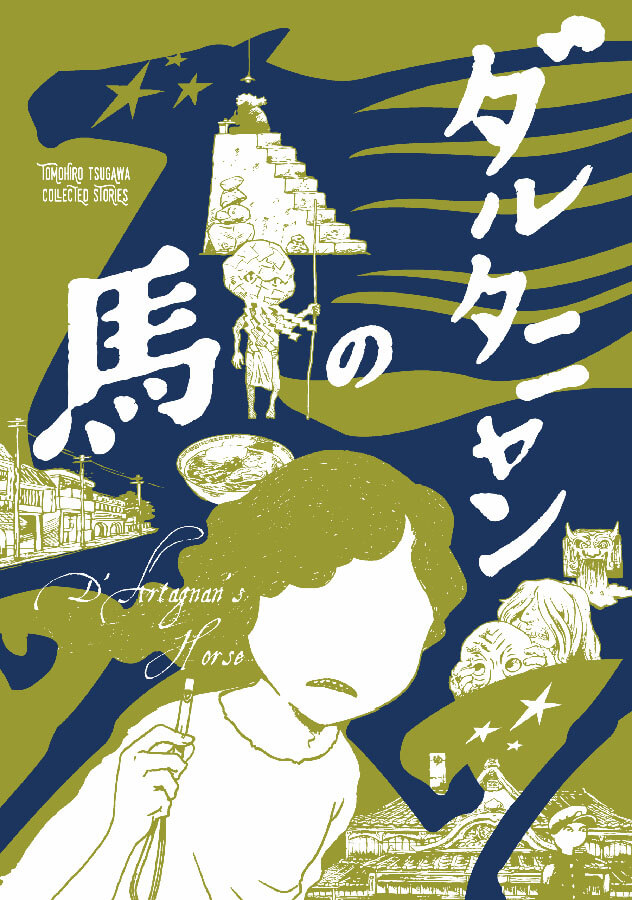
This follow-up is definitely better than its predecessor, but it still carries all the same fundamental flaws. Whilst there is more narrative conclusion to most of the stories, with clear ends rather than things being left off in the middle, it doesn’t compensate for the method of storytelling.I can understand why Tsugawa would wish to produce another dream journal to see where he’s at six years later, but I still don’t think it merits much outside of an academic or fine art context. In the comments before the manga began, he mentions having produced another manga which featured his artistic interpretation of other people’s dreams. I think this would have been a better follow-up to the Mermaid Town, and I’m a little upset to not get an official English translation.
The overall artistic skill and creativity does make me want to read more of Tsugawa’s work, so I am grateful for the inclusion of a preview for their next work, Nemuri’s Interchange. The first few pages featured both the emotional connection found in D’Artangan’s Horse as well as the creative creature design. And, it has the added benefit of being a traditional narrative! As of writing, there do not appear to be any official plans from Glacier Bay Books to publish this manga in English, but I hope that will change in the future.
You can buy D’Artagnan’s Horse from Glacier Bay Books.
If you liked D’Artagnan’s Horse, you may also like…
- A Drunken Dream and Other Stories
- Wee Wanderings: My Solo Trip in Scotland
- Be Very Afraid of Kanako Inuki!
Credits
Story and Art: Tomohiro Tsugawa
Translation: Kristjan Rohde
Lettering: Lauren Eldon
Design and Layout: Emuh Ruh & Lauren Eldon
Editing: Emuh Ruh
English Publisher: Glacier Bay Books
Thank you to Glacier Bay Books for providing a review copy. Receiving this copy had no effect on the reviewer’s opinions as expressed here.
Article edited by: Anne Estrada
The Good
- Creative creature design
- Detailed artwork
- Better than previous volume
The Bad
- Nothing new
- Still boring

Featured Sponsor - JAST
The sweetest romance and the darkest corruption, the biggest titles and the indie darlings; for visual novels and eroge, there's nowhere better.
Big thank you to our supporters
From their continous support, we are able to pay our team for their time and hard work on the site.
We have a Thank-You page dedicated to those who help us continue the work that we’ve been doing.
See our thank you page
